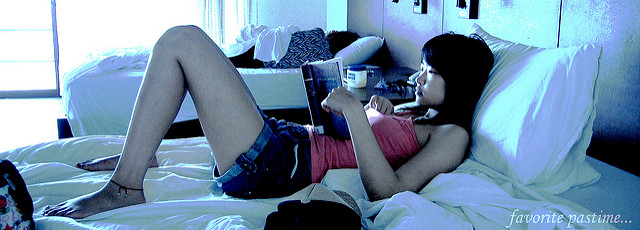2.10: Conclusion to Critical Reading
- Page ID
- 5274
As discussed at the opening of this module, reading for pleasure is significantly different than reading for school. The purpose of why we read changes: we move from being entertained, to being educated.
That said, the two kinds of reading have more in common than not. And practicing one kind of reading helps improve the other at the same time. Consider this excerpt from the scholarly article “Reading Revolutions: Online Digital Text and Implications for Reading in Academe” by Barry W. Cull:
The Benefits of Leisure Reading
Part of the high value placed on reading may have something to do with the intellectual benefits of reading, including leisure reading, which has been long established by research. Predictably, the practice of reading helps to strengthen literacy proficiency — the more you read, the better reader you become. A significant correlation exits between the frequency of reading books and literacy levels (Grenier, et al., 2008). Similarly, youth who read or write letters in their leisure time at home score significantly better on literacy scores (Willms, 2003). When it comes to college students, students who read for fun as well as for study do better academically than students who do not read beyond what is required for their coursework (Burgess and Jones, 2010).

Figure \(\PageIndex{1}\)
So, find things you enjoy reading, and use them as rewards or breaks from academic reading. Many benefits come from keeping your reading skills active, even for “guilty pleasure” books and magazines!


